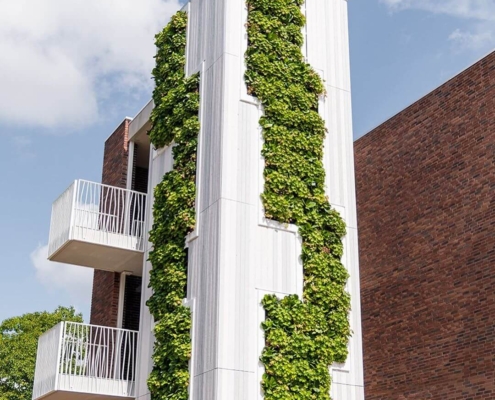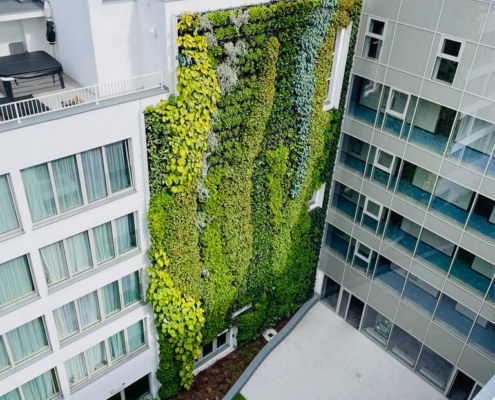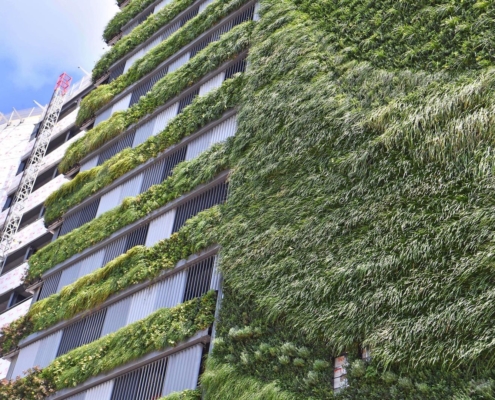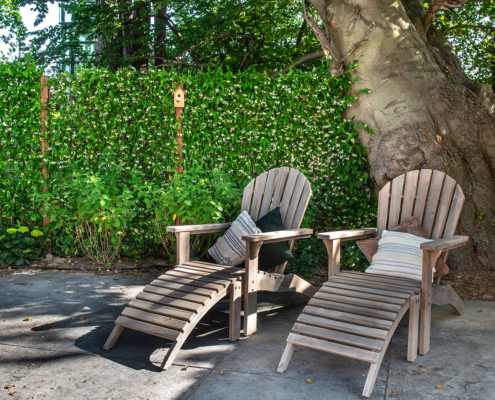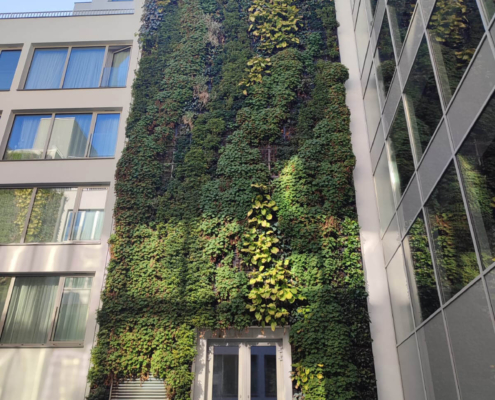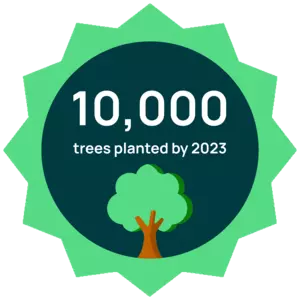Green cities of the future - how nature is changing urban space
With the growing challenges of climate crises and rapid urbanisation, the concept of green cities of the future is becoming increasingly relevant and crucial for sustainable development. The integration of nature into urban space, where vegetation becomes an integral part of architecture, makes it possible to improve the quality of life for residents and protect the environment. Planted façades, green roofs, urban gardens and other green solutions are not only aesthetic accents in the urban landscape, but also effective tools in the fight against climate problems and air pollution.
Green facades - air filter and thermal insulation
Vegetated walls, or green facades, are one of the most modern and effective ways to improve the quality of urban spaces. Plant-covered façades have the ability to absorb carbon dioxide and other air pollutants and emit oxygen, improving the quality of the air that residents breathe. In addition, thanks to plants that filter dust particles, dust and smog, green facades provide a natural barrier against pollution.
Furthermore, vegetation on façades also acts as thermal insulation, lowering the temperature of buildings in summer, thanks to the cooling effect of the plants, which absorb excess heat. In winter, plants act as an additional insulating layer, reducing heat loss from buildings, resulting in lower heating costs and improved energy efficiency.
Green facades also have a positive impact on the microclimate in cities. By improving air quality, reducing the urban heat island effect and increasing biodiversity, vegetated walls help to improve urban living comfort, especially in high-density areas.
Green roofs - natural protection from the heat
Another solution that is gaining popularity in cities is green roofs. These types of roofs covered with vegetation not only improve the aesthetics of buildings, but, above all, act as protection against excessive heating of buildings in summer. They reduce the urban heat island effect by absorbing solar radiation and lowering the surrounding temperature. In addition, green roofs make it possible to retain rainwater, which does not run off into the sewerage system but is used by the vegetation, reducing the risk of flooding, which is becoming an increasingly common problem in cities.
Vegetation on roofs also supports biodiversity by creating a habitat for pollinating insects, as well as for birds, which can use these spaces as resting or nesting places. Such solutions therefore not only have an ecological aspect, but also an educational one, involving city dwellers in caring for the environment.
Ivy panels - an ecological solution for the cities of the future
Ivy panels is an innovative form of vegetated facades that fits perfectly with the concept of green cities of the future. Thanks to their easy application, these panels are an effective tool for creating green spaces in cities, improving air quality, reducing noise and lowering the temperature of buildings. Vegetation on such panels not only contributes to the aesthetics, but also acts as natural thermal insulation, supporting sustainable urban development.
Green in public spaces - green friendly cities of the future
Green infrastructure in cities is not only about planted facades or roofs, but also about introducing greenery into public spaces. Pocket parks, green squares, plant constructions at bus stops, bicycle shelters or urban spaces are excellent examples of how greenery improves the quality of life in cities. Such places become enclaves of tranquillity in crowded agglomerations, offering space for residents to relax and unwind. Greenery in cities also improves wellbeing by lowering stress levels, and research shows that contact with nature in an urban environment can have a positive impact on mental and physical health.
In addition, vegetation has a sound-absorbing function, which is important in busy areas. Greenery acts as a natural sound barrier, absorbing noise and reducing noise levels, which improves living comfort in densely populated parts of cities.
Green investments - economic and environmental benefits
Investing in vegetated façades and green roofs are not only steps towards greener cities, but also measures that bring tangible economic benefits. Vegetation on buildings significantly reduces air conditioning and heating costs, which translates into lower energy bills. In addition, investments in urban greenery increase property values, which can attract investors looking for modern, sustainable solutions. Sustainable urban planning is also becoming increasingly attractive in the eyes of consumers, who pay attention to ecological aspects when making property purchase decisions.
More and more cities and investors are also recognising the positive impact of greenery on the image of a location. Buildings with planted facades, green roofs and public spaces full of vegetation attract residents, tourists and potential tenants. Thanks to such solutions, the city gains not only in aesthetics, but also in energy efficiency, biodiversity and quality of life.
Collaboration with Zielone-Fasady.pl - building the green cities of the future now
If you are looking for comprehensive support in the implementation of projects related to vegetated facades, green roofs and ivy panels, our company Green Facades offers full support at every stage - from design to implementation. Thanks to many years of experience and cooperation with the best specialists in the industry, Zielone-Fasady.pl is able to provide top quality solutions that combine modern architecture with nature.
With innovative technologies and a customised approach, our company provides optimal solutions that contribute to the green cities of the future. We invite you to work with us in building cities that are friendly to people and the environment. Green Facades is a partner that will help create a space where nature and urban planning coexist in harmony.
